Covid-19: Is school mask and testing policy flawed?
- Published
- comments
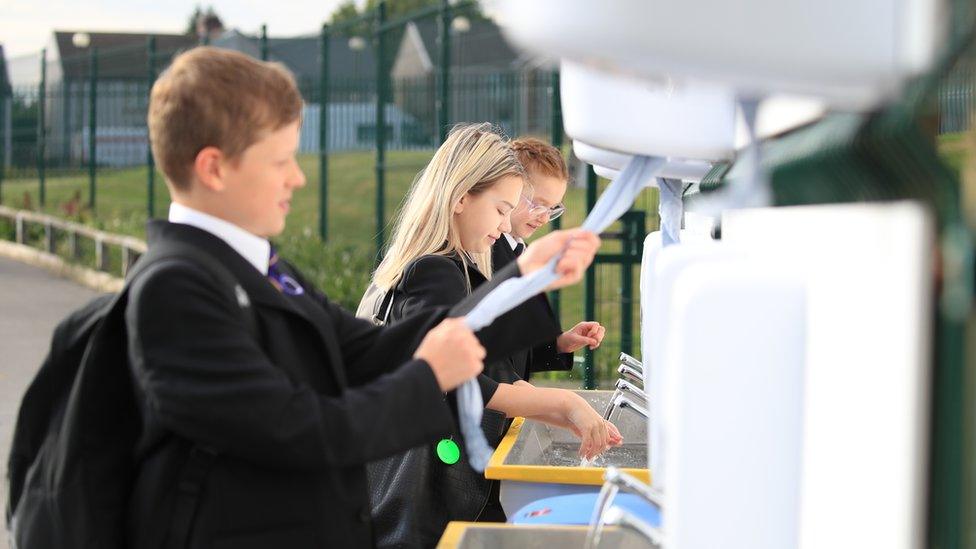
Schools reopen to all pupils next week in England - the first part of the UK where this will happen. It is a crucial step for children and wider society in the route out of lockdown.
Masks are to be worn by secondary school children in classes, while mass testing is being introduced. But will these steps be a help? And does it even matter if infection rates go up?
How testing could do more harm than good
To reduce the risk of spread of the virus, the government has introduced mass testing. All secondary school pupils will be offered three tests on their return before being asked to carry them out twice a week at home.
These will be rapid lateral flow tests that provide a quick result on the spot, unlike the ones that are carried out in official testing centres - known as PCR tests - that are sent off to labs. The rapid tests are less accurate - they may pick up only between half to three-quarters of positive cases, but given they are being used to spot cases before people develop symptoms or for those who do not develop symptoms, the government is adamant they have an important role.
What does Covid testing in schools look like?
The problem is they can result in a false positive, telling people they are infected when they are not. Research suggests this happens one to three times for every 1,000 tests carried out.
One safeguard would be to get anyone who tests positive to then take a PCR test to confirm it. This is being done for tests that are done in people's homes, but not for those carried out in school.
Assuming most pupils take up the option of the tests, that could result in thousands of pupils and their close contacts being asked to isolate unnecessarily.
That may be a price worth paying if it was spotting many more positives, but the testing done in schools in recent weeks, of pupils and staff who have been attending, shows the number testing positive is now at the lower estimate for the false positivity rate.
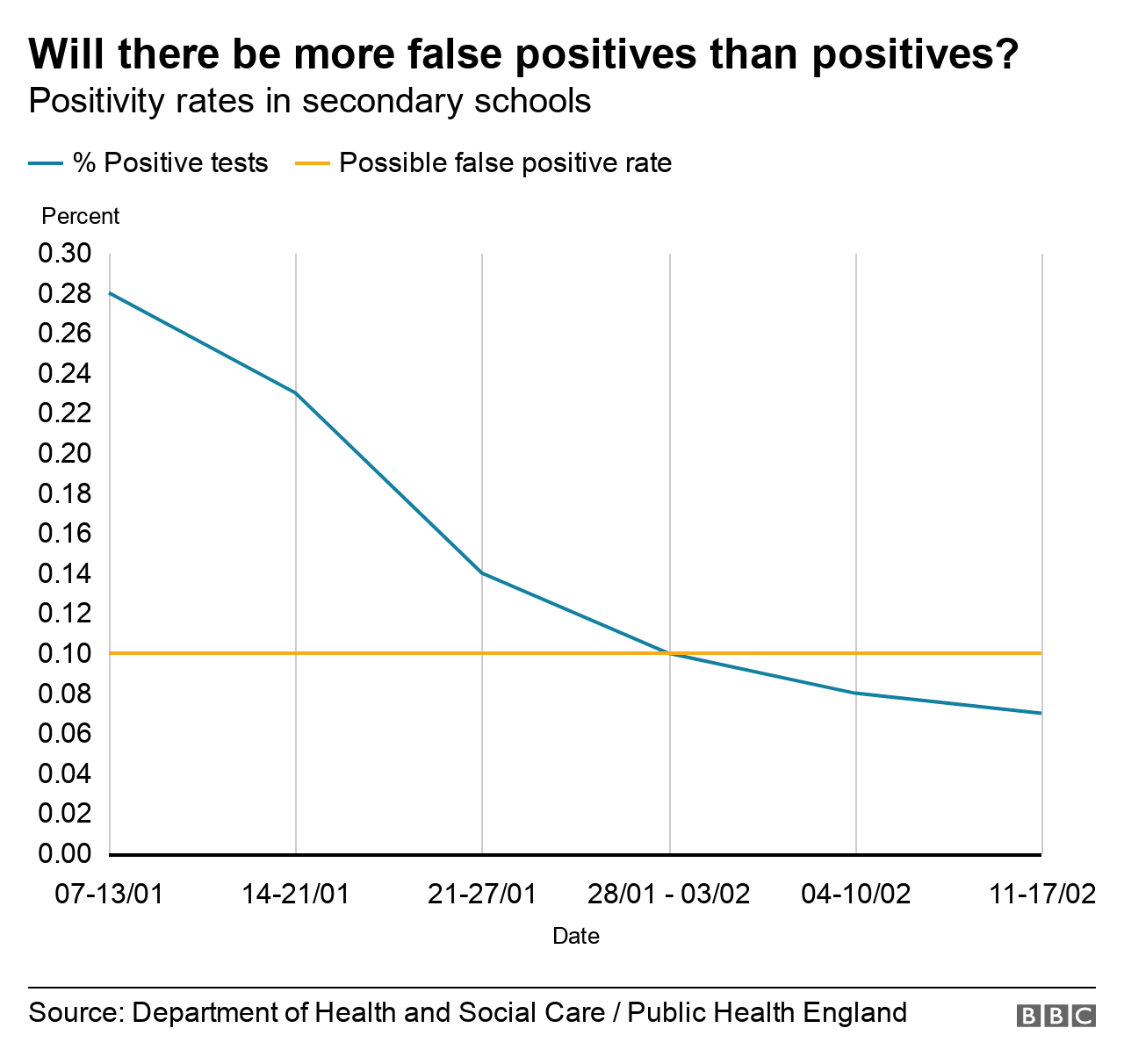

Birmingham University biostatistician Prof Jon Deeks says given the low detection rates that are being seen it is "absolutely clear" many of those getting positive test results next week will be false positives.
"Any testing system is a trade-off between benefits and harms," he says. "My concern is that it will actually cause more harm than good."
Concerns have been raised by the Royal Statistical Society, too. Prof Sheila Bird, a member of the society's Covid-19 Task Force, told BBC Radio 4's Today programme false positives were "very likely" and that every positive lateral flow test should have a PCR test to confirm it.
Has masks policy opened a can of worms?
The second key change - and the most controversial - is the recommendation of masks in classes for secondary age schoolchildren. Previously pupils were just expected to wear them in communal areas, like corridors.
Critics say it will harm learning and is unfair to expect children to wear masks for hours on end. But others have argued it is an absolute necessity and should have been introduced in primary schools too.
The problem is the benefit of mask-wearing is difficult to quantify. Recent evidence from the government advisory group Sage, external acknowledges this, although it says there is evidence that worn correctly they will have a "small but significant" impact on transmission by preventing the wearer from spreading the virus if they are unknowingly infected.
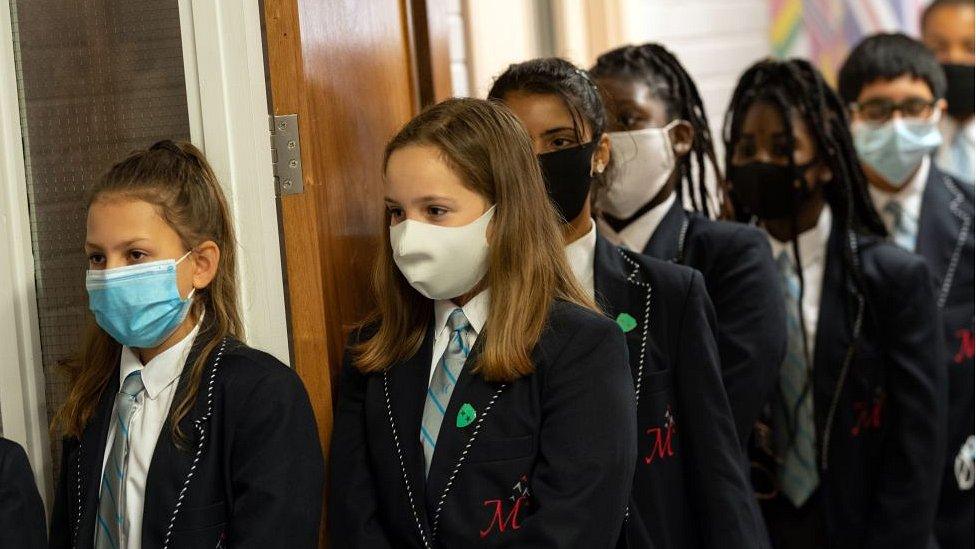
This is mainly derived from lab experiments though, and much will depend on how they are used, it says. Will teenagers adhere to the best practice on mask-wearing for hours on end?
It is for this reason some experts say they would have liked to see a proper trial in schools to measure the impact. "We always do this for a medical intervention - there are lots of things that work in the lab but not in the real world," says Prof Jonathan Ball, a virologist at Nottingham University.
"But for some reason we don't do this with non-medical interventions. It would be complicated, but this would be the ideal opportunity to do it - and help us decide if they are useful or make matters worse."
Without a trial, the fear is it will be difficult for the government to stop the practice. If cases remain low, it could be argued masks have made the difference and if they creep up, the case could be made they would have gone up more without mask-wearing. The move could, in other words, open a can of worms.
But it is a risk ministers seem happy to tackle. The government insists the use of masks is "temporary and precautionary" - and will be reviewed at Easter. Or, in the words of one scientific adviser: "We know it's not going to make much difference, but if it helps us get schools back, it's worth the hassle when it's dropped."
Why rising infection rates may not matter
It is well-established that children are at incredibly low risk from the virus, while research by the Office for National Statistics has shown that teachers are at no higher risk of infection than other working-age people.
What role will schools play in the wider spread of the virus though remains more open for debate. Children, after all, come home and mix with their families.
Government advisers say schools have not been a key driver of infections so far. This much can be seen from the impact of the second national lockdown in England in November when infection levels fell despite schools being open.
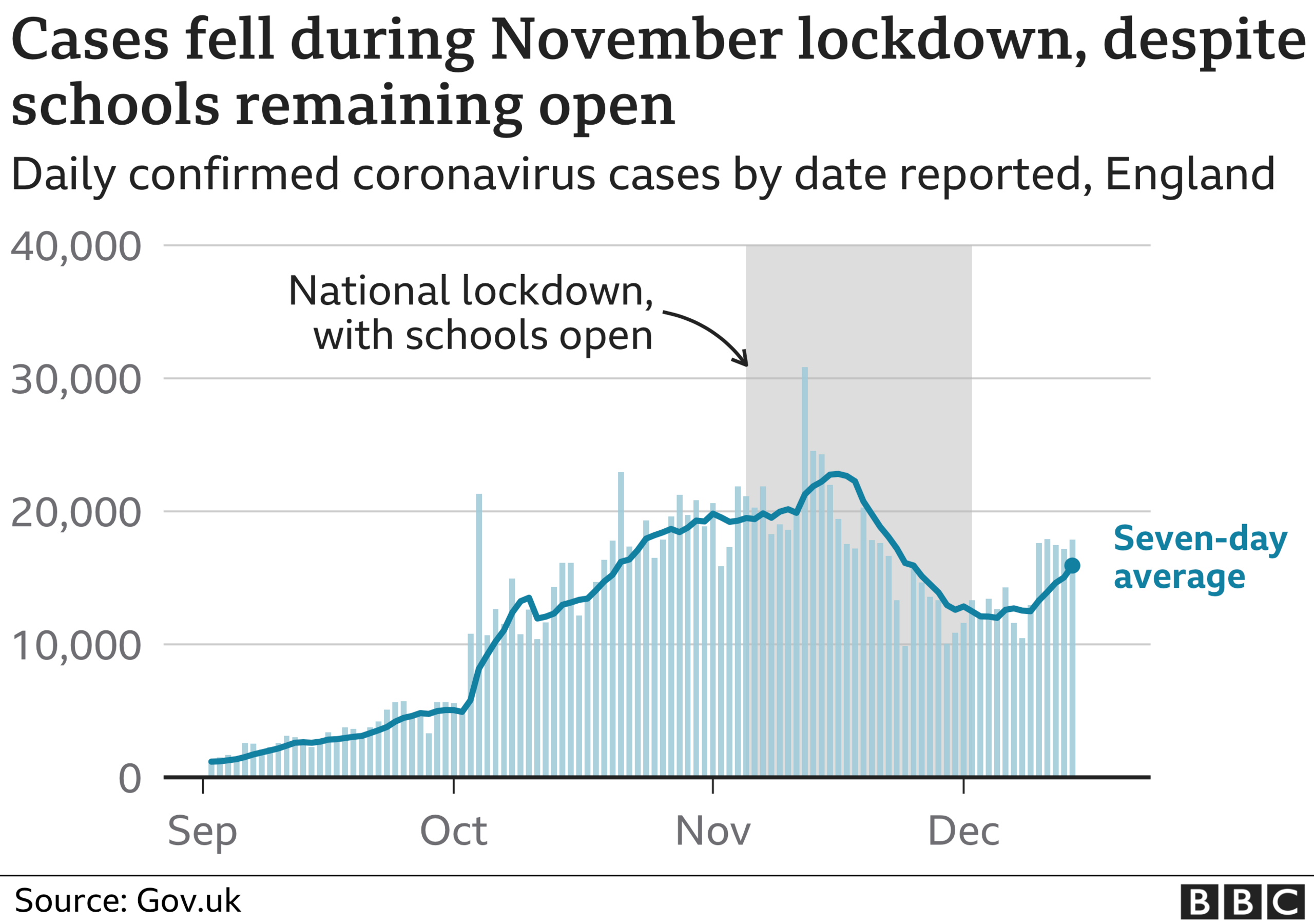

But this was before the new UK variant became dominant. Modelling has suggested reopening schools now could be enough to drive the R number above one, external, which would lead to a growing epidemic.
Ministers have already indicated this matters less than it used to because the vaccination programme has begun to break the link between infection rates and serious illness and death - the R number is not one of their tests for slowing the pace of lifting lockdown.
Dr Muge Cevik, an infectious disease expert at the University of St Andrews, says it is impossible to disentangle exactly what impact schools have - although she says all the evidence suggests the school outbreaks that have happened have mainly been small.
"The evidence of harms of closing schools is clear. They should be open as default unless there is very strong evidence that closing them will have a significant impact on hospitalisations and mortality."
Follow Nick on Twitter, external
Related topics
- Published5 July 2023
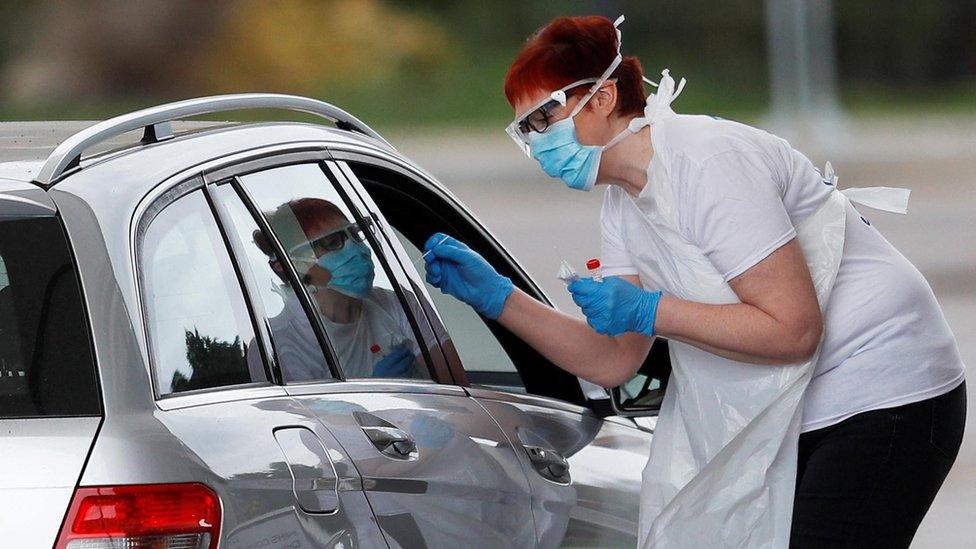
- Published5 July 2022

- Published30 April 2020

